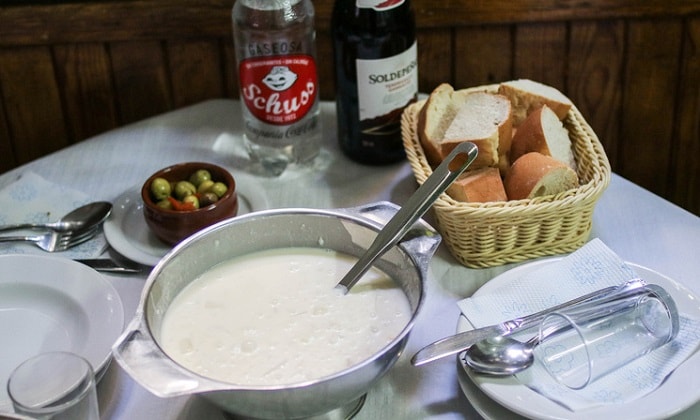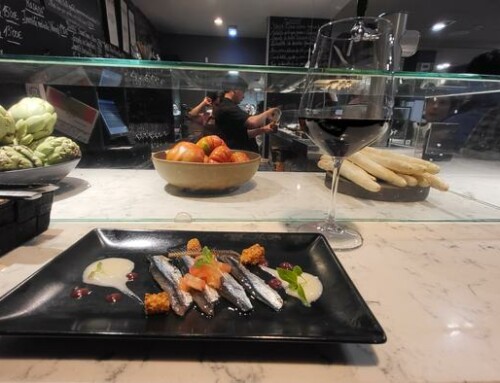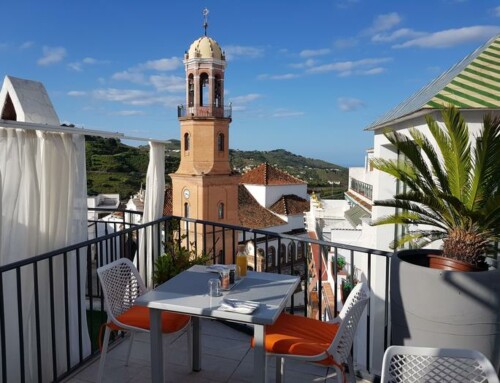Galicia is a true paradise for seafood lovers. The uniqueness of its waters and the multiplicity of marine ecosystems along its 400 kilometers of coastline, make Galician seafood, in addition to having an unparalleled volume of catches and variety, are considered the best in the world, as noted by internationally renowned chefs such as Ferrán Adriá. Oysters, barnacles, crabs, spider crabs, cockles, scallops… there are many delicacies that can be found there. But if there is one that has become an emblem in Galicia, it is undoubtedly the pulpo (octopus).
Although today it is possible to enjoy this versatile mollusk throughout the country, it is on the northwest coast of the country where octopus reaches perfection, especially when it is cooked in the local way, that is, Galician style or a feira (which are the same, only that the former includes potatoes in its recipe and the latter does not).
The Origin.
Being such a distinctly seafaring dish, its origin is very curious as it dates back to the sixteenth century and is located in O Carballiño, a town belonging to Orense, located 80 kilometers from the coast.
There, where the Monastery of Oseira is located, an important Cattle Fair used to take place. As was the custom at that time, the octopuses were dried to preserve them, so the monks, in order to feed the fair visitors, cooked the pieces of octopus and seasoned them with salt and olive oil. From there came the nickname a feira and soon this preparation spread to the rest of the Galician provinces and other nearby ones such as Sanabria (Zamora) and El Bierzo (León).
Pulpo a la gallega or a feira – Galician-style octopus is one of those recipes that should not be underestimated, because although it has few ingredients (octopus, potatoes, extra virgin olive oil, salt and paprika), finding the octopus’ optimal cooking time requires a bit of practice. So, let’s get our hands on this delicacy from the cold waters of the Atlantic!
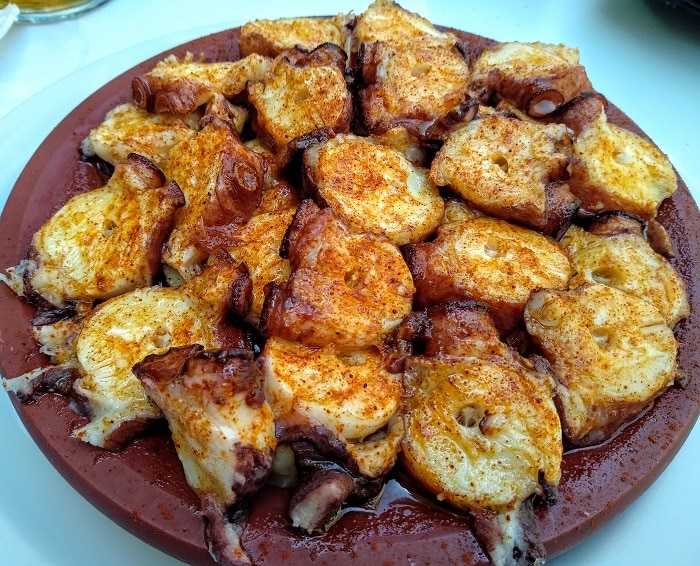
Ingredients:
- 1 octopus (2 kg), clean and ready.
- 1 kg of potatoes.
- Coarse salt.
- Pimentón de la Vera (sweet or spicy, as you prefer). The one from La Dalia is really good.
- Extra virgin olive oil.
Preparation:
NOTE: if you bought a fresh octopus, freeze it for 48 to 72 hours. This is to break the muscle fibers of the mollusk so it does not become hard when cooked, something that sailors used to solve in the past by hitting the octopus against the rocks when they arrived at port. It is also very important to take it out of the freezer the night before and put it in the refrigerator so that it defrosts slowly.
- Fill a large pot with water and put it on the heat (don’t add salt).
- When it starts to boil, we have to “scare” the octopus. This technique consists of taking the octopus by the head and dipping it in and out of the boiling water three times (about 5 seconds each time). This is done so that the skin does not come off during further cooking.
- put the octopus in the water and once it starts to boil again, we let it cook for about 30 – 35 minutes. Although people recommend to cook the octopus 18 minutes per kilo, it’s not an exact science and it also depends on the skill we have, so you should prick it from time to time with a toothpick to see how it is developing.
- Once the cooking time is over, turn off the heat and let the octopus rest for another 15 minutes.
- Transfer the octopus to a bowl and put the potatoes, well cleaned, with skin on and cut in half, in the same water. Let them cook for about 15 minutes (it will depend on the size, so again, it is a good idea to prick them with a toothpick from time to time to see if they are ready). In Galicia, they call this potatoes’ preparation cachelos.
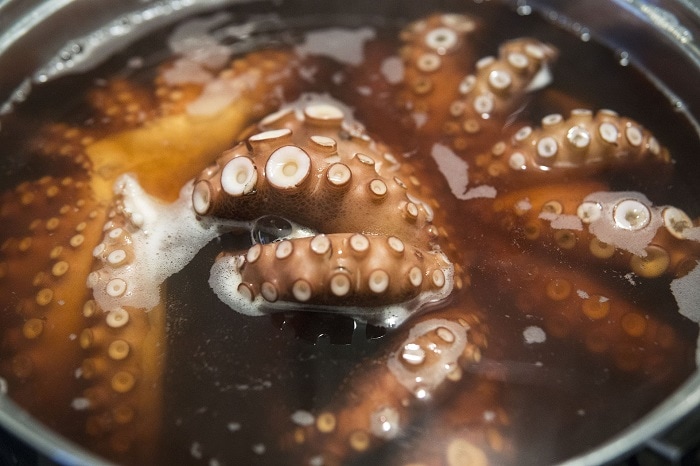
When it starts to boil, we have to “scare” the octopus
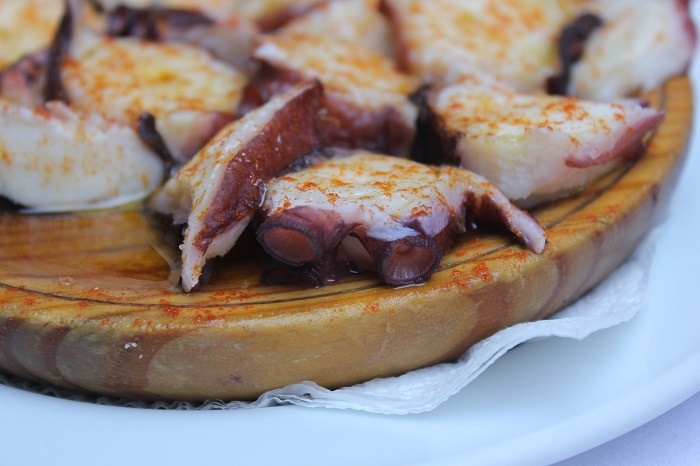
Typical Wooden Plate to serve Pulpo a la Gallega
Plating:
- Traditionally in Galicia a pine wood plate is used, since the wood absorbs the water but not the oil, something ideal for this recipe. Not surprisingly, professional pulpeiros (octopus cookers) recommend soaking the dish in the octopus cooking water before plating it, because in addition to providing added flavor, it keeps the dish warm during the meal. If you can’t find pine wood plates, use any other wood plate , such as this one on Amazon made of Acacia wood.
- Remove the skin from the potatoes, slice them and place them on the bottom of the plate.
- With kitchen scissors we cut the tentacles of the octopus in pieces of 1 centimeter approximately, the part of the head in smaller pieces and we place them on the potatoes.
- Add coarse salt and sprinkle with sweet or spicy paprika de la Vera to taste. Drizzle all the ingredients with extra virgin olive oil.
- Almost as important as the dish itself is to a serve it with a good cateto bread for dipping and pair it with some of the magnificent albariños of the area such as Mar de Frades D.O Rias Baixas
NOTES AND CURIOSITIES:
– Although pulperías (octopus restaurants) have traditionally used copper cauldrons to cook the octopus, since 2011, health authorities have advised against their use because in the long run they can be toxic if they are not cleaned properly.
– To prepare the cachelos, the most appropriate potato variety is the Kennebec type.
– Although any type of quality extra virgin olive oil can be used, many professional pulpeiros suggest the Hojiblanca variety as the one that best suits this dish.
Don’t forget to share this post!
Related Articles
↓
Sign up for our Newsletter and get the inside scoop on our favorite recipes,
exploring and devouring Spain and more.
